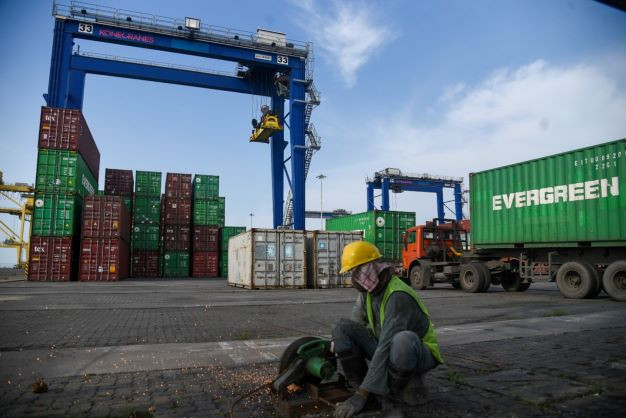75 reported dead in Philippines typhoon
More than 300,000 people fled their homes and beachfront resorts as Typhoon Rai ravaged the southern and central regions of the archipelago.
Change Size

A
t least 75 people have been reported killed in the strongest typhoon to hit the Philippines this year, official tallies showed on Sunday, as efforts to deliver water and food to devastated islands ramped up.
More than 300,000 people fled their homes and beachfront resorts as Typhoon Rai ravaged the southern and central regions of the archipelago.
The storm knocked out communications and electricity in many areas, ripping off roofs, toppling concrete power poles and flooding villages.
Arthur Yap, governor of the popular tourist destination Bohol, said on his official Facebook page that mayors on the devastated island had reported 49 deaths in their towns.
That took the overall number of reported deaths to 75, according to the latest official figures.
Yap said 10 people were still missing on the island and 13 were injured after the storm smashed into the country on Thursday as a super typhoon, packing wind speeds of 195 kilometers per hour.
"Communications are still down. Only 21 mayors out of 48 have reached out to us," Yap said, raising fears the death toll could rise in the flood-hit province, where some residents were rescued from their rooftops.
Thousands of military, police, coast guard and firefighting personnel are being deployed to assist in search and rescue efforts in the worst-affected areas of the vast archipelago.
Heavy machinery – like backhoes and front-end loaders – are also being sent to help clear roads blocked by fallen power poles and trees.
Charities and emergency services have appealed for donations.
A Philippine Navy ship carrying goods and other relief would depart for Bohol on Monday, Yap said, after he earlier declared a state of calamity on the island.
An aerial survey of damage to the island's north made it "very clear that our people have suffered greatly in terms of destroyed homes and agricultural losses", he said.
Thousands of boxes of water had been delivered after power cuts across the island disrupted water refilling stations, Yap added.
'Reminiscent' of Haiyan
There has also been widespread destruction on Siargao, Dinagat and Mindanao islands, which bore the brunt of Rai when it slammed into the Philippines.
Aerial photos shared by the military showed severe damage in the Siargao town of General Luna, where many surfers and holidaymakers had flocked ahead of Christmas, with buildings stripped of roofs and debris littering the ground.
Dinagat Governor Arlene Bag-ao said on Saturday that the damage to the island's landscape was "reminiscent of if not worse" than that caused by Super Typhoon Haiyan in 2013.
Haiyan, called Yolanda in the Philippines, was the deadliest cyclone on record in the country, leaving more than 7,300 people dead or missing.
In Surigao City, on the northern tip of Mindanao, shattered glass from smashed windows, sheets of corrugated iron roofing, power lines and other debris were scattered in the streets.
Rai's wind speeds eased to 150 kph as it barreled across the country, dumping torrential rain, uprooting trees and destroying wooden structures.
It emerged over the South China Sea on Saturday and headed towards Vietnam.
Rai hit the Philippines late in the typhoon season. Most cyclones typically develop between July and October.
Scientists have long warned that typhoons are becoming more powerful and strengthening more rapidly as the world becomes warmer because of human-driven climate change.
The Philippines – ranked among the globe's most vulnerable nations to the impacts of climate change – is hit by an average of 20 storms and typhoons every year, which typically wipe out harvests, homes and infrastructure in already impoverished areas.









